Manhattanhenge 2013: The Who, What, When, Where And Why Of New York’s Solar Phenomenon And Its Ties To Archaeoastronomy, Baseball And War [PHOTOS, VIDEO]
The coiner of the term Manhattanhenge, Neil deGrasse Tyson is an accomplished fellow. He has a doctorate in astrophysics from Columbia University; master’s degrees in astrophysics from Columbia University and astronomy from the University of Texas at Austin; a bachelor’s degree in physics from Harvard University; and a diploma with an astrophysics emphasis from the Bronx High School of Science.
And Tyson is the Frederick P. Rose director of the Hayden Planetarium at the American Museum of Natural History in New York; a research associate in the museum’s department of astrophysics; and the former host of the Public Broadcasting Service’s “Nova ScienceNow.”
But, for all Tyson’s achievements, the one most appreciated by many camera-wielding New Yorkers is his popularization of Manhattanhenge over the past dozen years.
Tyson beautifully explains Manhattanhenge on the American Museum of Natural History’s online site. An extract of his explanation follows:
“What will future civilizations think of Manhattan Island when they dig it up and find a carefully laid out network of streets and avenues? Surely the grid would be presumed to have astronomical significance, just as we have found for the prehistoric circle of large vertical rocks known as Stonehenge, in the Salisbury Plain of England. For Stonehenge, the special day is the summer solstice, when the Sun rises in perfect alignment with several of the stones, signaling the change of season.
“For Manhattan, a place where evening matters more than morning, that special day comes twice a year. For 2013, they fall on May 28 and July 13, when the setting Sun aligns precisely with the Manhattan street grid, creating a radiant glow of light across Manhattan’s brick and steel canyons, simultaneously illuminating both the north and south sides of every cross street of the borough’s grid. A rare and beautiful sight. These two days happen to correspond with Memorial Day and [Major League] Baseball’s All-Star break. Future anthropologists might conclude that, via the Sun, the people who called themselves Americans worshiped War and Baseball.
“For these two days, as the Sun sets on the grid, half the disk sits above and half below the horizon. My personal preference for photographs. But the day after, May 29, and the day before, July 12, also offer Manhattanhenge moments, but at sunset, you instead will find the entire ball of the Sun on the horizon.”
According to Tyson, the best Manhattanhenge vantage points are on 14th, 23rd, 34th, 42nd and 57th streets, as well as on the streets above and below them, not on the West Side but on the East Side.
Almost-constant light pollution in the Big Apple means New Yorkers cannot see with their naked eyes many of the awesome cosmic events observed in the heavens by other skywatchers across the U.S. and around the world, so Manhattanhenge goes a long way toward compensating for this astronomical fact of life in The Town So Nice They Named It Twice.
The chief factor governing Manhattanhenge visibility is the weather. On July 6 at publication time, the Weather Channel’s 10-day forecast for New York indicated there could be isolated thunderstorms on July 12 and 13.
Because of Mother Nature’s blanketing of New York with cloud cover sporadically in late May, the best Manhattanhenge paparazzi batted .500 in capturing images of the setting Sun around Memorial Day. All such photographers struck out the first day (May 28), but shutterbugs were afforded a chance to separate the relative amateurs from the absolute professionals the second day (May 29), when one of the former (i.e., me) did not get a single money shot on 34th Street, while a couple of the latter (i.e., Reuters staffers) got a number of them on 42nd Street.
You can check out Manhattanhenge images captured by photographers Gary Hershorn and Eduardo Munoz May 29 both below and in a slideshow at Reuters.com.
And you can also check out Manhattanhenge honcho Tyson discussing the New York solar phenomenon in this Associated Press video, either here or at YouTube:
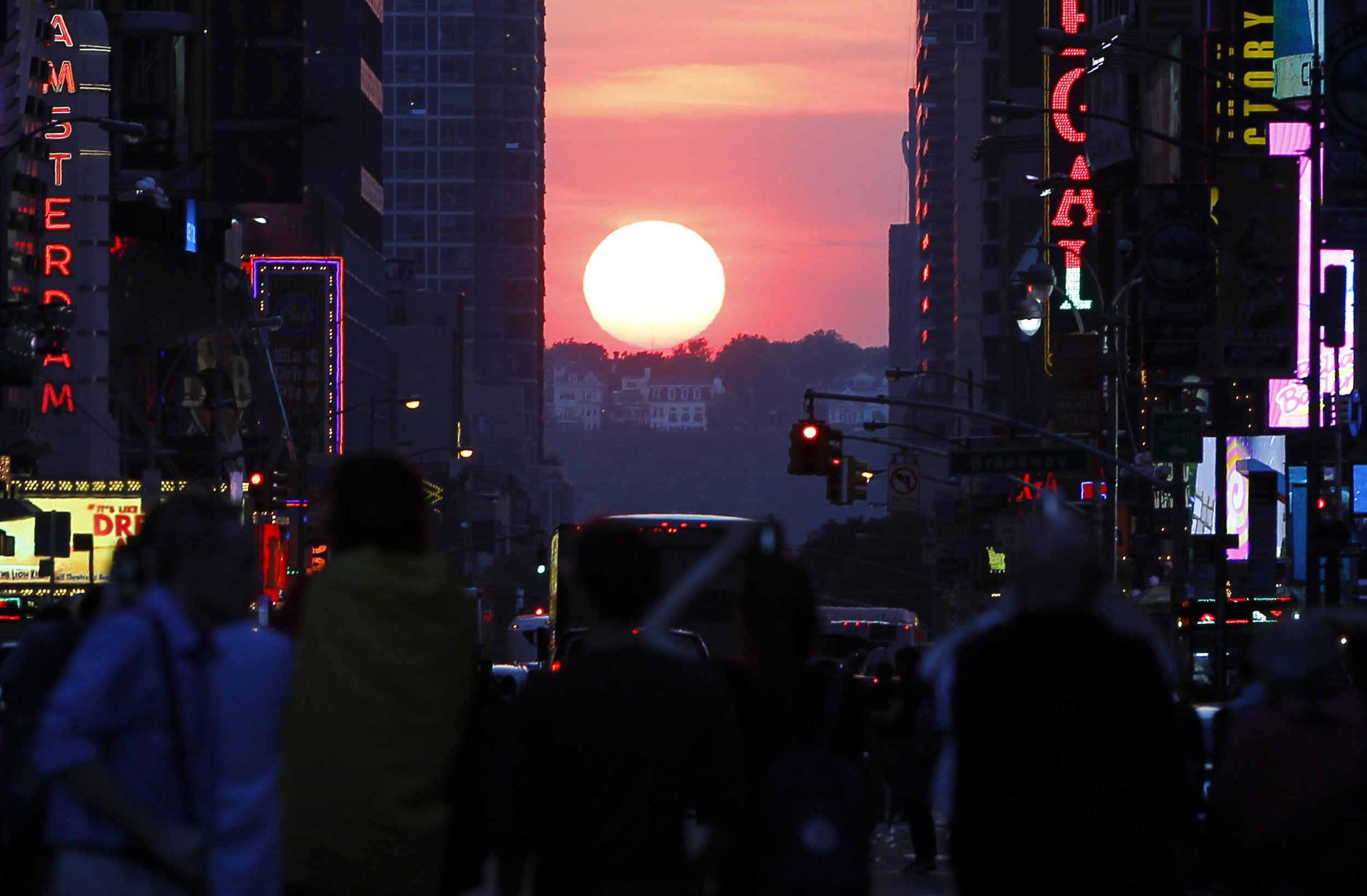
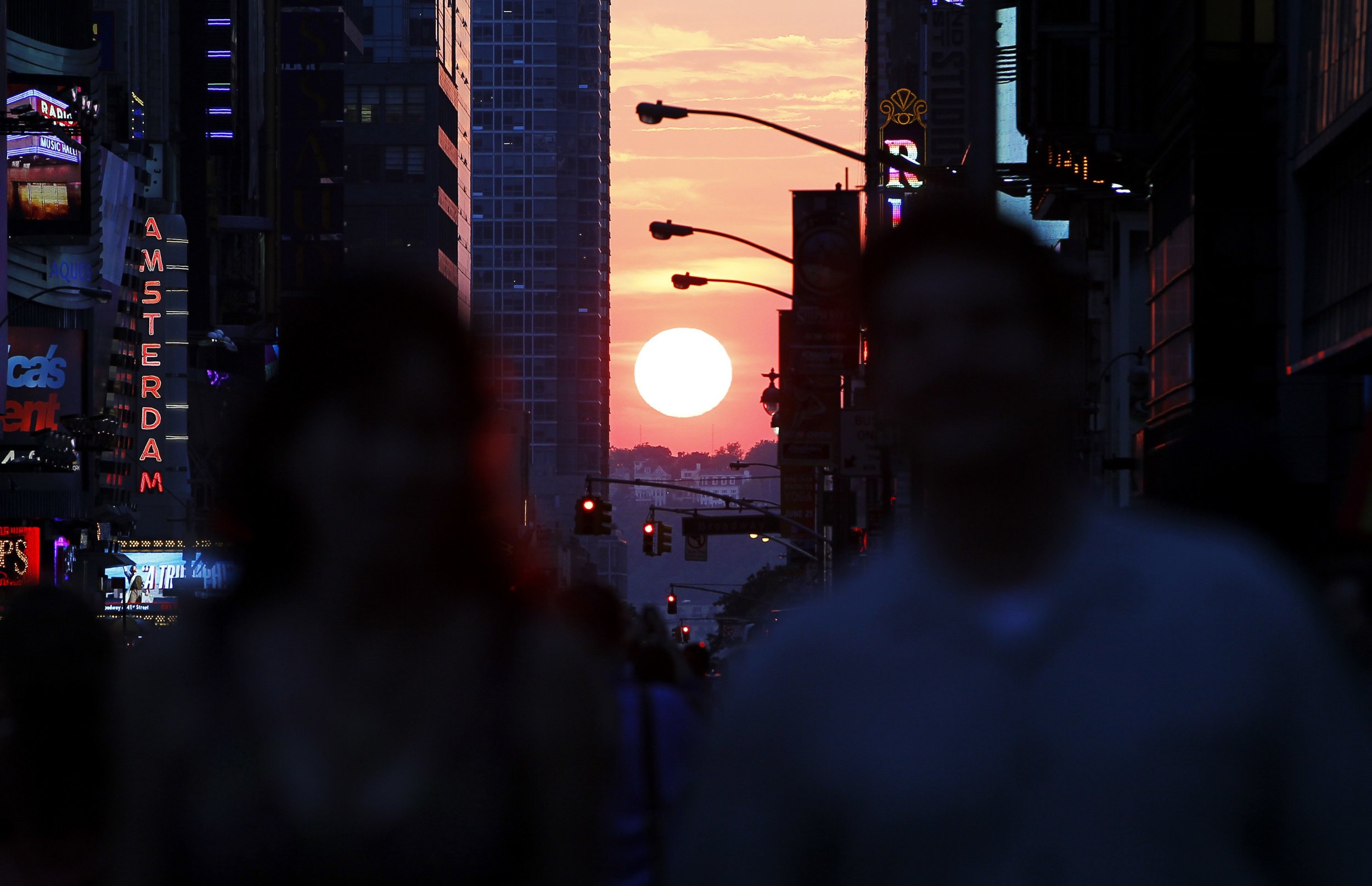
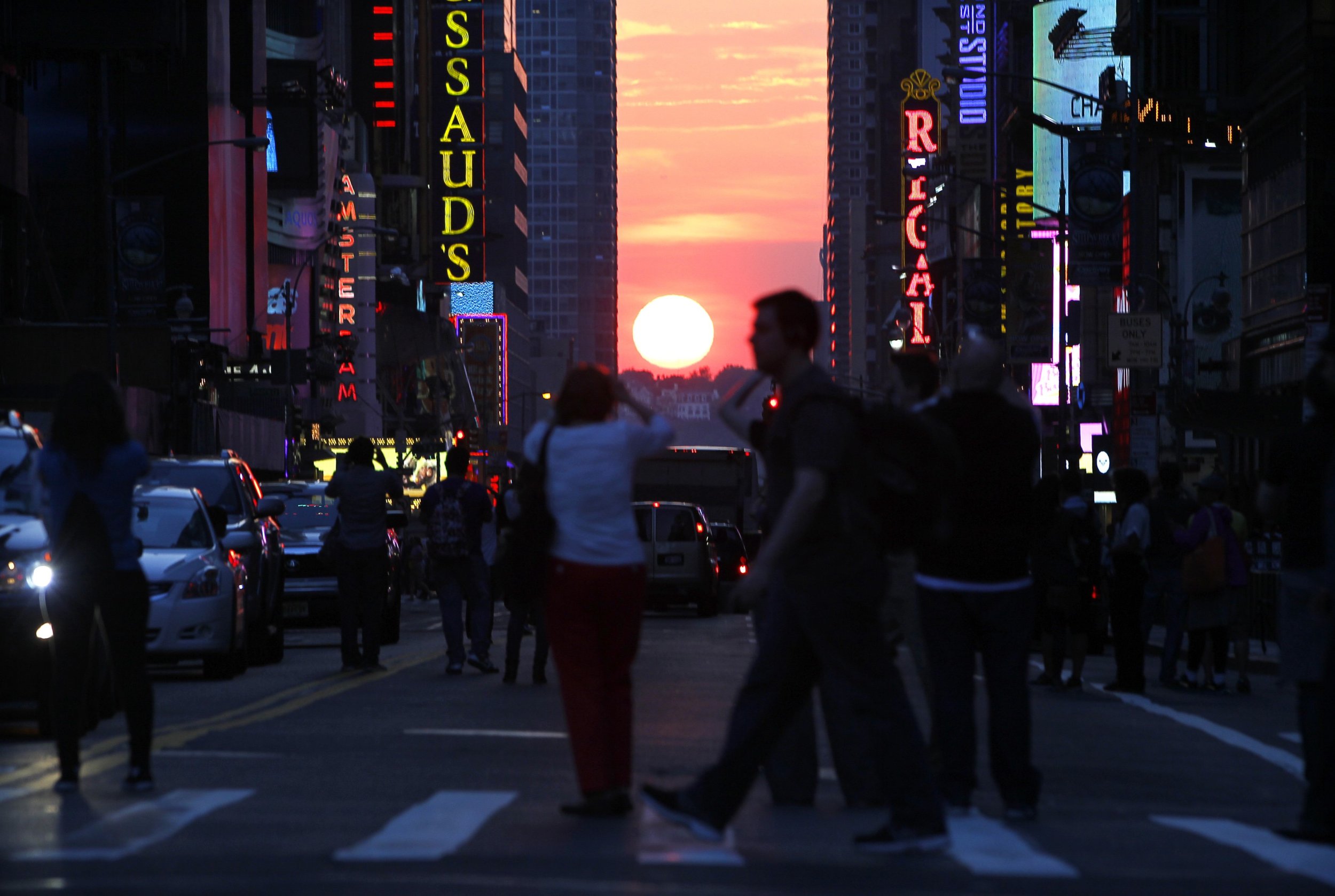

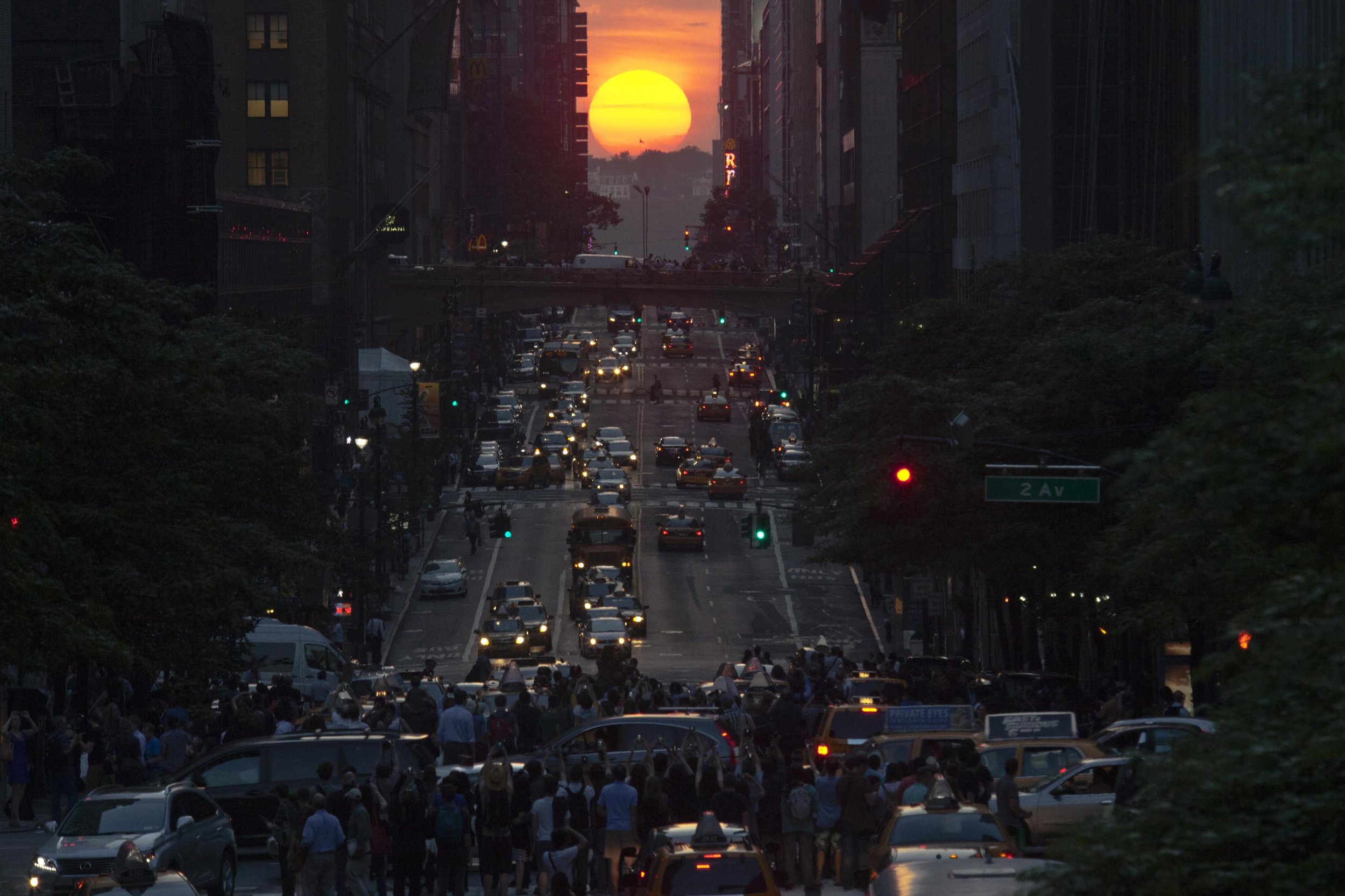
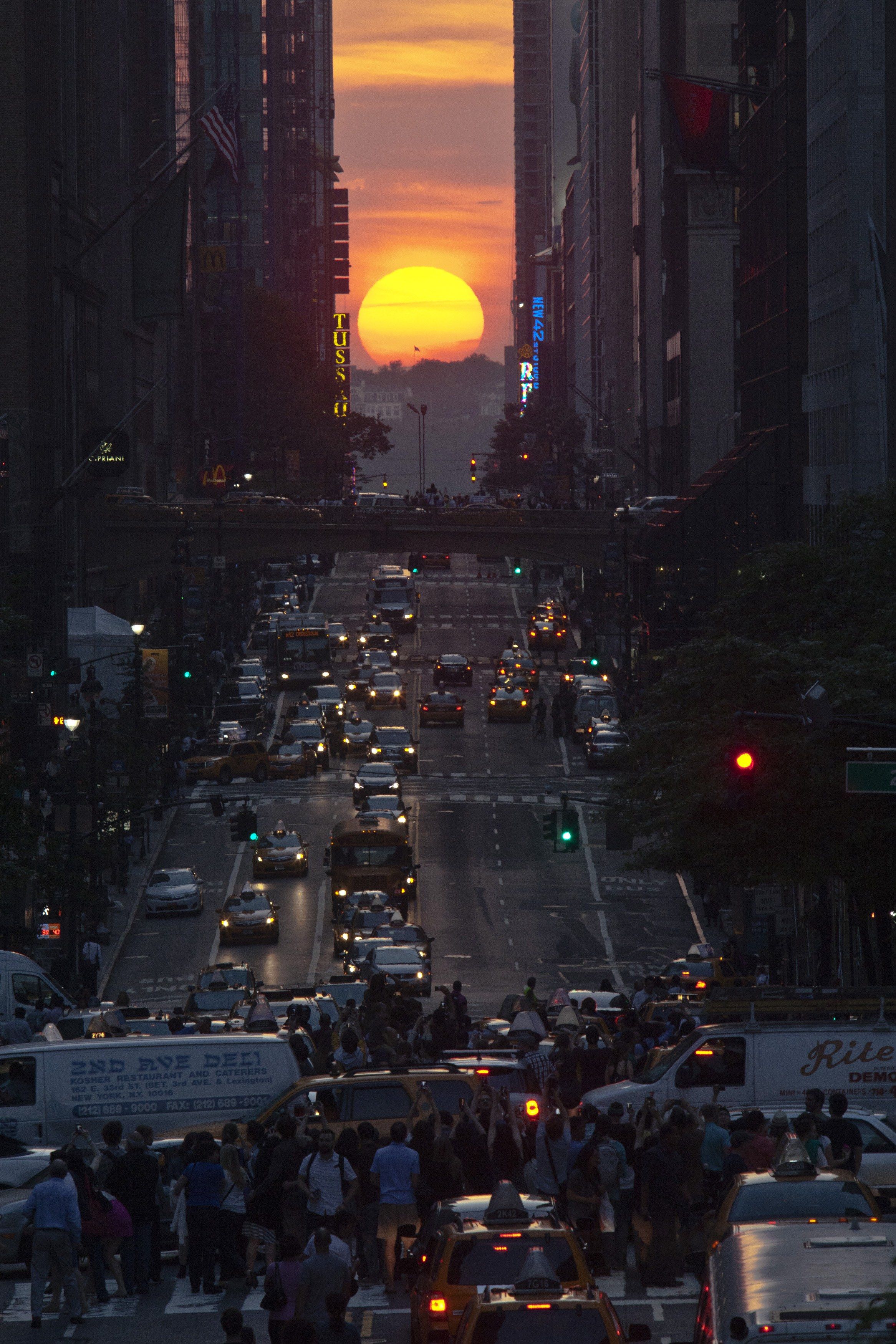
© Copyright IBTimes 2024. All rights reserved.






















